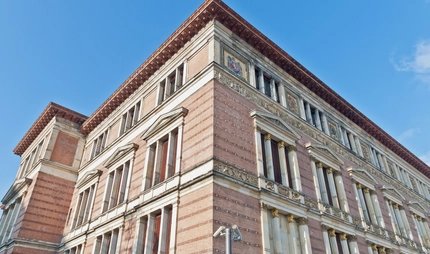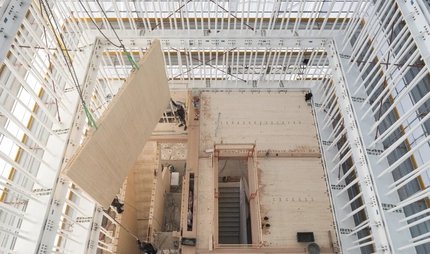
Kupferstichkabinett (Museum of Prints and Drawings)
Drawings, graphics and watercolours by great artists
The Kupferstichkabinett displays drawings, prints and watercolours from the past 1,000 years. You can see exhibitions of stunning graphic art here too.
Berlin's Kupferstichkabinett (Museum of Prints and Drawings) is home to one of the world's most important graphic collections. You will need to visit several times to see even a small part of this collection, which features over 500,000 prints and 110,000 drawings, watercolours and oil sketches. Here, you will find almost everything: from figurative studies and sketches through to landscapes in pastel. The collection features works by artists as diverse as Albrecht Dürer, Caspar David Friedrich and Andy Warhol. The museum runs several special exhibitions each year. Thanks to a study hall, you can also check out specific works.
Graphics and watercolours in red, blue or green
Elector Friedrich Wilhelm of Brandenburg is a passionate collector of drawings and watercolours in the mid-17th century. They are housed his Library Court, and this collection forms the basis of the 1831 Kupferstichkabinett, which grows quickly. In 1835, it is augmented by approximately 50,000 exhibits from the Prussian Postmeister General Karl Ferdinand Friedrich von Nagler. Among these works are Albrecht Dürer and Matthias Grünewald. Later, drawings and prints are added. Here, you can reconstruct the creation processes of all the large paintings. Prepare for fascinating moments retracing the preparatory works behind your favourite paintings. At the Kupferstichkabinett, you can see the sketches and drawings that prefigure the masterpieces. Since 1994, the Kupferstichkabinett has been part of the Staatliche Museen zu Berlin, housed in the Kulturforum at Potsdamer Platz. Plan your visit in advance: the Cabinet runs special temporary exhibitions. You can experience Picasso's Minotaur or Munch's depictions of death in a very special atmosphere. Andy Warhol's colourful portraits of Marilyn Monroe, which you may be familiar with, contribute to the Pop Art collection. Works form the 19th century also feature: Caspar David Friedrich's melancholic romantic landscapes for example, or lithographs by Auguste Renoir. If you are looking for a particular work, take advantage of the service in the study room where it is easy to browse and study in peace and quiet.
A museum like a library - highlights of the Kupferstichkabinett
- Rembrandt's etching depicting his wife Saskia (ca 1637)
- Colour lithograph "The pinned hat" by Auguste Renoir (1898)
- "The Bee-keeper", drawing by Pieter Bruegel the elder (16th century)
- Print by Ugo da Carpi "Diogenes" (ca 1530)
- The drawing "Half-length portrait of a young girl" by Albrecht Dürer (1515)
More museums on art history, film and design
From the Museum of Prints and Drawings to the Art Library, you won't have far to go. They are both housed in the same building. More than a million volumes on the history of art and media can be found here: for example ornamental engravings, photographs from the 1920s or fashion magazines from the 19th century. Directly opposite the Kulturforum you will find the Gemäldegalerie. This museum is dedicated to European painting from the 13th to the 18th century. Here you can see masterpieces by Rembrandt, Dürer, Holbein and Tizian. Plan a little more time for the Botticelli Collection. It is considered the most important collection of Italian Renaissance artists north of the Alps. The Gropius-Bau is located close to Potsdamer Platz. The building houses changing exhibitions on cultural history, archaeology, contemporary art and photography.
How to get there
Take the underground line 2 or the S-Bahn lines S1, S2 and S25 to Potsdamer Platz. From there it is about 600 metres on foot. Children and young people up to the age of 18 have free admission. With the Museumspass you can visit the Kupferstichkabinett for free on three consecutive days.



